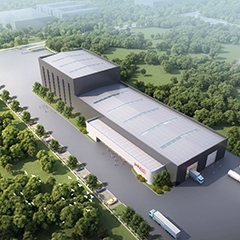PolyTech has initiated the establishment of a test center in China, which will be the company’s first testing facility outside of Denmark. The center will specialize in performing lightning tests and is expected to open in Q2 2022.
PolyTech is a full-service provider of solutions to the wind industry with leading expertise in lightning protection solutions (LPS). Such solutions require vigorous R&D, testing and validation, in addition to continuous adjustments according to market development and demands. As the wind industry is transitioning to use carbon fibers in wind turbine blades, more complexity arises when it comes to LPS, which in turn requires extensive testing and validation. To maintain PolyTech’s leading expertise in LPS, the company continues to grow its business through creating value to its customers in a sustainable way. The establishment of a test center in China comes as PolyTech aims to expand its services close to its customer base. With the continuous growth of the global wind energy market, there is also a rapidly growing demand for large-scale equipment testing. Transporting the equipment, such as wind turbine blades and nacelles, are becoming more and more challenging as they are growing significantly in size. To eliminate the long-distance transport of equipment and make testing more time-efficient, PolyTech has decided to establish a test center in China. Testing will therefore be close to where the prototyping and development also take place.
The test center will specialize in performing lightning tests by using extra high-voltage and high-impulse currents to simulate all stages of a lightning strike. The center will also handle smaller tests on sub systems, parts and components. All tests will be performed in accordance with the newest IEC standards.
The construction site of the facility has already been selected, whereas the detailed design and construction will commence in Q1-Q2 2021. The opening of the facility is expected in Q2 2022. The facility will be 150 m long in order to fit the longest turbine blades on the market. With a 24 m high ceiling, the facility will also allow future larger nacelles to be tested against the harmful effects of a lightning strike. This facility will therefore be large enough to handle several blades at the same time to ensure time- and cost-efficient testing of equipment, and undertake tests on the largest offshore blades in the world.
Mads Kirkegaard, CEO of PolyTech, highlights the test center’s strategic importance. “As wind turbine manufacturers across the world are prototyping many new blades in China, our Danish-based lightning test center is no longer the obvious choice when testing and certifying these new blade designs and LPS. Establishing a lightning test center in China therefore makes sense from an economical and sustainable point of view. With the increased complexity of lightning protection resulting from the transition to carbon, we want to ensure testing availability in the vicinity of the customers we are strategically partnering with regarding LPS. The Chinese test center is therefore a natural next step for us.”
The test center will be established in Jiangsu Province, north of Shanghai. It will be part of the Sheyang Port Economic Development Zone, which is a hub for supporting the offshore wind industry. PolyTech is also looking into pursuing other business areas at the facility related to blade services. These include leading edge protection installation, blade sensor instrumentation, and blade repairs and improvements.
With PolyTech’s manufacturing and sales facilities in Wuxi, Shanghai and Beijing, the test center will further strengthen the company’s business in China. PolyTech has great expectations for the facility and the regional business development due to the test center’s close proximity to the sea and to several wind turbine manufacturers in the area.



























